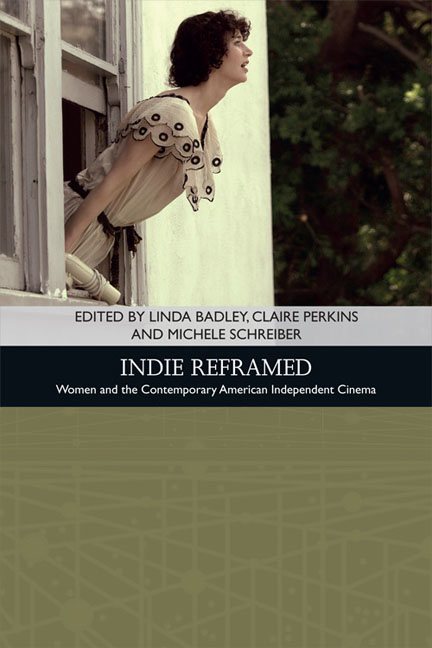5 - ‘I’m Absolutely the Right Person for this Job’: Allison Anders and Mary Harron on Lifetime Television
Published online by Cambridge University Press: 10 November 2020
Summary
Allison Anders and Mary Harron are among a group of women directors that produced a substantial body of work in the thriving American independent cinema scene of the 1990s and 2000s. Anders, who rose to prominence in the Sundance Film Festival ‘class of “92”’, alongside Quentin Tarantino, Robert Rodriguez and Alexandre Rockwell, is known for her innovative interpretation of the women's film in Gas Food Lodging (1992), Grace of My Heart (1996) and Things Behind the Sun (2001). Harron's films I Shot Andy Warhol (1996), American Psycho (2000) and The Notorious Bettie Page (2005) offer indelible portrayals of larger-than-life characters that blur cultural, social, and gender boundaries.
Both women began to find steady work in television throughout the 1990s and 2000s, directing individual episodes of a broad range of broadcast and cable programmes. Harron's credits include Oz (1997–2003), Six Feet Under (2001–5), and The L Word (2004–9), and Anders’ include Sex and the City (1998–2004), The L Word (2004–9), and Orange is the New Black (2013–). Both also directed biopics for Lifetime Television in 2013, with Anders making Ring of Fire, the life story of June Carter Cash, and Harron helming Anna Nicole, the life story of Anna Nicole Smith.
Unlike their predecessors in the 1970s and 1980s, directors such as Anders, Harron, Nicole Holofcener, Lisa Cholodenko and Lynn Shelton (among many others) have resisted the lure of commercial studio filmmaking. Their crossover into Hollywood has happened by way of television instead. In fact, this kind of transmedia movement has become a professional necessity for many women filmmakers (and independent filmmakers more generally) recently. With the proliferation of basic and premium cable programming over the last fifteen years, as well as the networks’ desire to at least match the quality of their cable counterparts, it has become more common for television directing jobs to go to individuals with established indie film credentials.
By focusing on Anders’ and Harron's work, this chapter will highlight the complications that arise when examining the industrial, aesthetic and authorial dynamics that accompany film directors’ crossing over into TV. On one hand, by discussing Anders’ and Harron's television texts alongside their films, I am implicitly arguing that their TV texts should be viewed as part of their oeuvres.
- Type
- Chapter
- Information
- Indie ReframedWomen's Filmmaking and Contemporary American Independent Cinema, pp. 87 - 104Publisher: Edinburgh University PressPrint publication year: 2017



